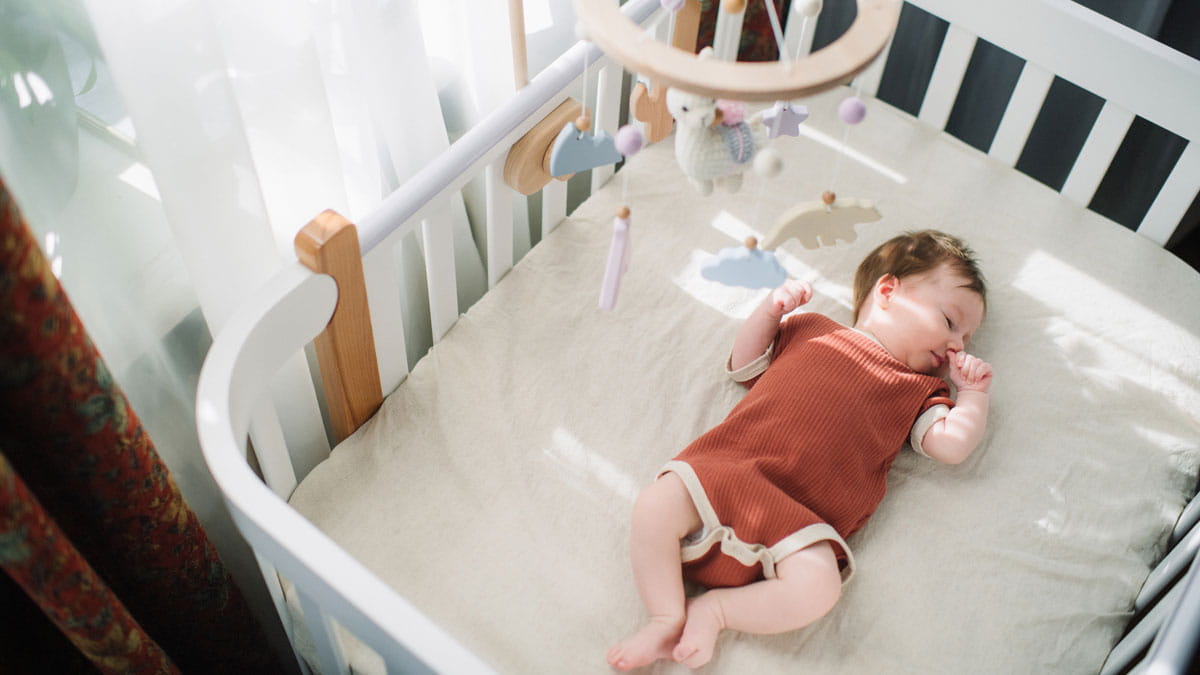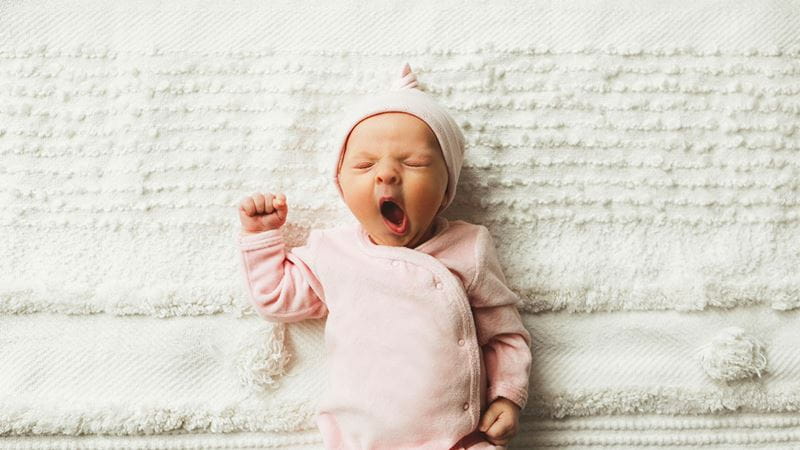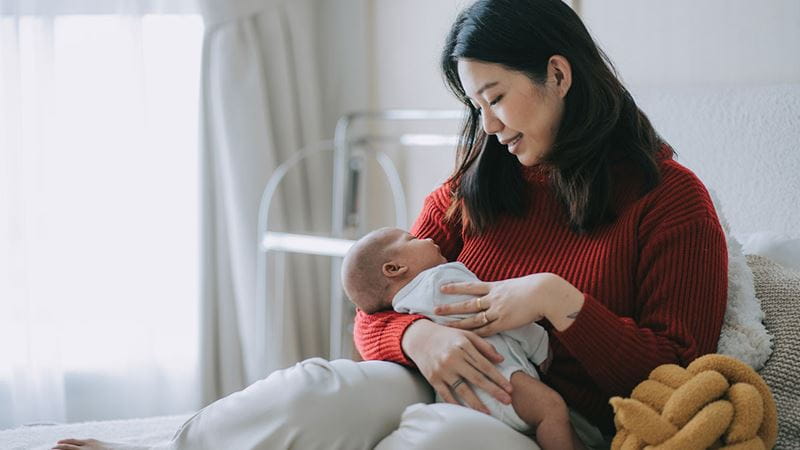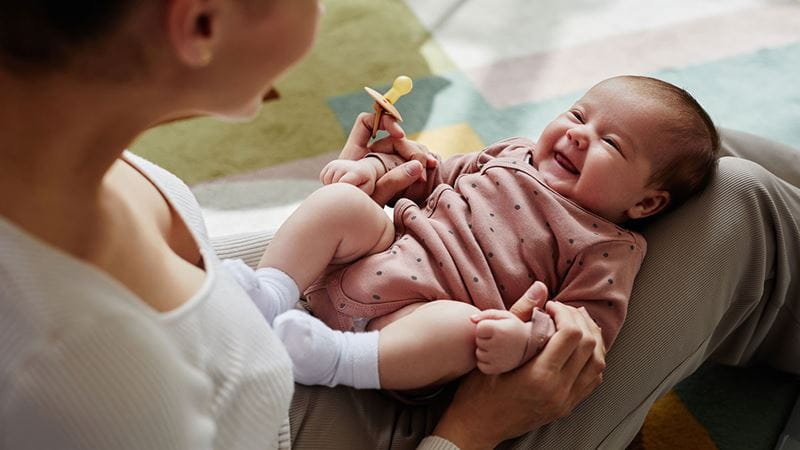Blog article
Safe sleeping tips every newborn parent should know

If you’re navigating the early days of parenthood, sleep safety is probably high on your list of worries – right up there with feeding schedules and figuring out what day it is and when you last showered.
This guide is here to help you rest a little easier, covering everything from safe co-sleeping to sleep sacks, tummy sleeping, and when it’s okay to introduce blankets.
What is a safe sleeping environment?
A safe sleeping environment is one where all potential risks are removed, and your baby has a secure space to rest – both during the day and at night.
The safest place for your baby to sleep is on a firm, flat mattress in a cot that meets the current Australian Standard AS/NZS2172-2010, with no soft bedding, pillows, toys, or cot bumpers. Always put your baby to sleep on their back, with their head and face uncovered, and keep the room smoke-free. Room-sharing (not bed-sharing) is recommended for at least the first 6 months, as it helps reduce the risk of SUDI (Sudden Unexpected Death in Infancy), including SIDS (Sudden Infant Death Syndrome), and makes it easier to monitor your baby’s sleep.1
Can you safely co-sleep with a newborn?
Co-sleeping can feel comforting and practical, with many parents saying they sleep better with their baby close. However, the Western Australian Department of Health as well as organisations like Red Nose, strongly advises against co-sleeping due to increased risks of Sudden Unexpected Death in Infancy (SUDI). Other significant risks include infant suffocation, entrapment (where the baby gets trapped between the mattress and wall, for example) and falling out of bed.7,8
Therefore, while the safest place for your baby to sleep will always be on a firm, flat mattress in a cot that meets the current Australian Standard AS/NZS2172-2010, with no soft bedding, pillows, toys, or cot bumpers, if you do choose to co-sleep, it’s important to do it safely.
Safer co-sleeping tips:2
- Always place your baby on their back to sleep, never on their side or tummy.
- Keep their head and face uncovered. No pillows, blankets, or soft toys nearby.
- Use a safe sleep sack with fitted armholes and no hood.
- Tie up long hair and remove jewellery or dummy chains that could pose a risk.
- Make sure your baby can’t fall out of bed. Placing the mattress on the floor can help.
- Position your baby to the side of one parent, never between two adults or near pets or siblings.
It’s important to note there are some specific circumstances where co-sleeping can increase the risk of sudden unexpected death in infancy (SUDI), or sleep accidents. These include if:2
- You or your partner smoke, use alcohol, drugs, or medications that make you less responsive.
- You’re extremely tired, unwell, or your baby is premature or unwell.
Is it safe for babies to sleep on their tummy or side?
No. Babies should always be placed on their back to sleep, as this position helps keep their airways open and significantly reduces the risk of SUDI.3 Sleeping on the tummy or side is only considered safe once your baby can roll over independently in both directions consistently and intentionally, usually around 4 to 6 months.4
What age is it safe for baby to sleep with a blanket?
It’s safest to wait until your baby has transitioned from a cot to a bed before introducing any loose bedding, including blankets. Red Nose recommends avoiding soft or loose bedding, such as blankets, pillows, bumpers, and soft toys, for all babies under 12 months of age, and for as long as they are sleeping in a cot as these items can increase the risk of suffocation, overheating, or being used as a step to climb out of the cot.5
Are sleep sacks safe?
Yes, if designed correctly. Sleep sacks (also known as infant sleeping bags) are considered a safe and practical option for keeping your baby warm during sleep. A safe sleep sack is designed so your baby can’t slip down inside and become completely covered. It should be the correct size for your baby, with a fitted neck and armholes (or sleeves) and no hood.6
Where to go for more information
If you’re ever unsure or concerned about your baby’s sleep, don’t hesitate to reach out to your GP or child health nurse.
For trusted advice and resources, you can also visit Red Nose, Australia’s leading authority on safe sleep and SUDI prevention.
For extra support, you can call Pregnancy, Birth and Baby, a national Australian Government service, on 1800 882 436 or use their video call service to speak directly with a maternal child health nurse. This free service is available 7 days a week, from 7am to midnight (AET). You can also call the Healthdirect helpline on 1800 022 222, available 24/7.


